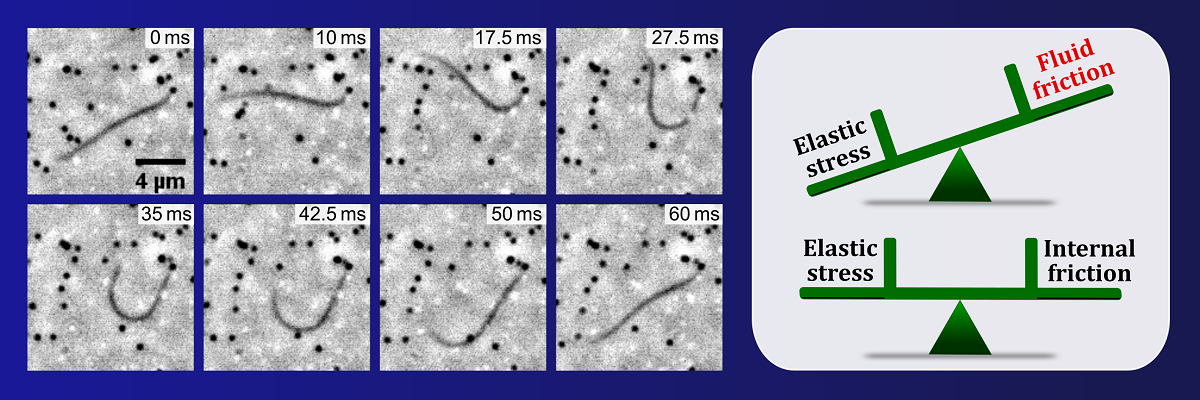Is fluid friction enough for active ciliary oscillations?
Cilia are whip-like appendages used by cells and tissues to generate fluid motion at the micron-scale. Motile cilia are indispensable organelles in our development and physiology – from the clearing of mucus in lungs, to the left-right symmetry breaking of early embryos responsible for the placement of heart and liver, and movement of sperm cells to the ovum. Mechanically, cilia are active filaments which undergo spontaneous oscillations by continuously consuming chemical energy and dissipating the same through periodic motion. Therefore, stable oscillations require that the active energy input must be balanced by a significant source of dissipation.
Ciliary beating, which occur in low-Reynolds regime (inertia << fluid dissipation), intuitively should be governed by external fluid drag. However, in a study published in Science Advances, researchers from the Department of Physics, IISc, show that external fluid friction is actually negligibly small to counteract the passive elastic stresses generated within the filament due to the active drive. Consequently, stable ciliary oscillations need ‘internal friction’, which arises due to slow structural rearrangements within the filament interior, to reach their dynamical steady state.
This counter-intuitive result is borne out of experiments using a new and unique methodology that combines waveform and flow field measurements of active cilia (isolated from the algae Chlamydomonas) for one-shot determination of both elastic and frictional components of the system. This study presents the first example of dominance of internal friction over hydrodynamics in a ubiquitous active system of cilia. It settles long-standing debates on the role of hydrodynamics in the collective behavior of cilia, and inspires further studies not just in the sub-topic of cilia but also in the larger community of biophysics, where the role of internal friction is still under-appreciated.

(Left) Time lapse images of an active cilia which is clamped at one end on the substrate and undergoing oscillations with a time period of 60 ms. Passive microspheres (black dots) are introduced in the suspension for measuring flow fields. (Right) The elastic stresses generated within the filament due to the active energy input can be counter-balanced by including internal friction as the sole source of dissipation, as fluid friction is negligible for obtaining stable ciliary oscillations. (Credit: Debasmita Mondal & Prerna Sharma)
REFERENCE:
Debasmita Mondal, Ronojoy Adhikari and Prerna Sharma, Internal friction controls active ciliary oscillations near the instability threshold. Science Advances 6, 33, eabb0503 (2020).
DOI:10.1126/sciadv.abb0503, https://advances.sciencemag.org/content/6/33/eabb0503
LAB WEBSITE: https://sites.google.com/site/biocolloids/




